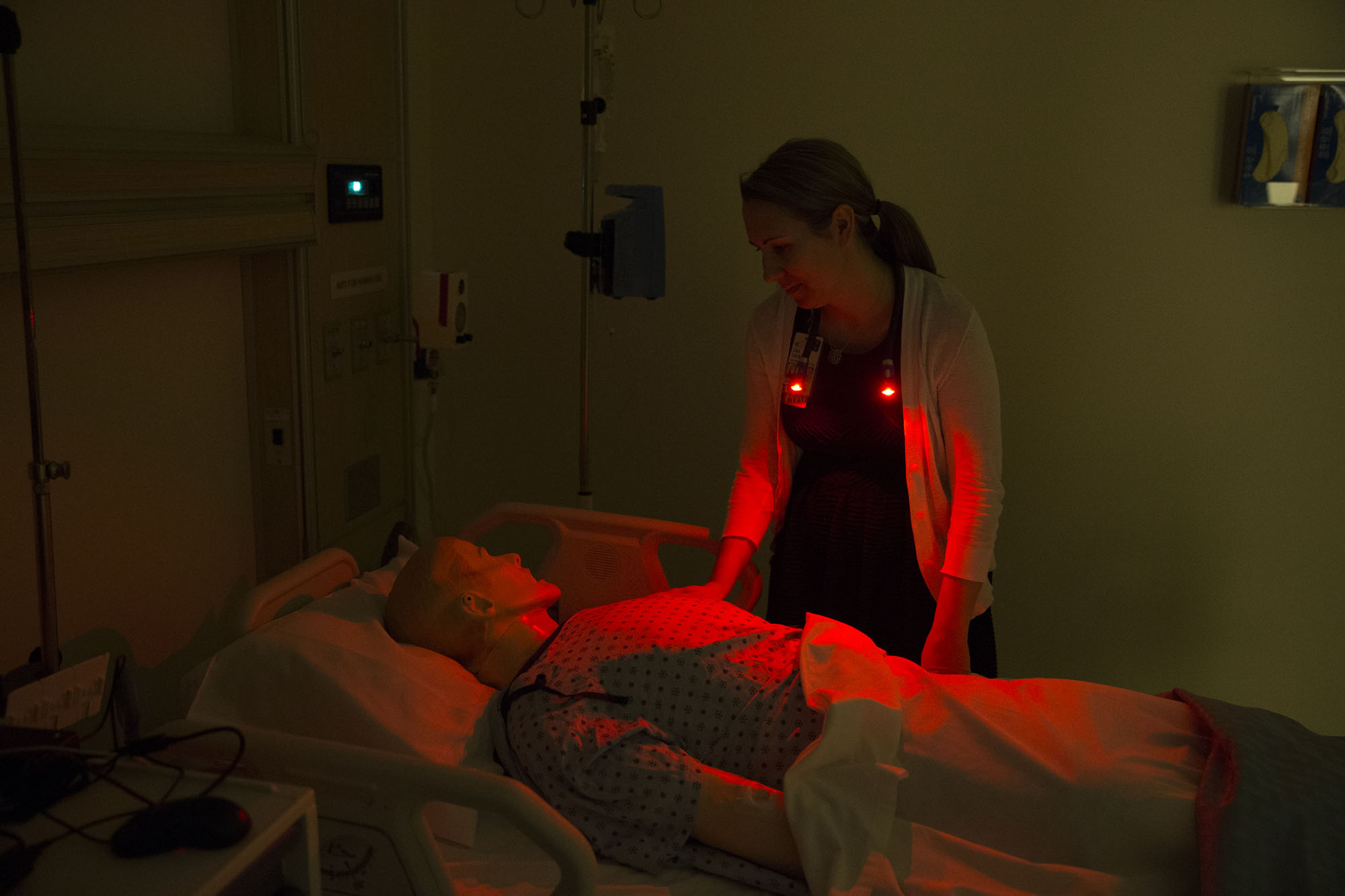There’s a lot in the hospital that gets in the way of a good night’s sleep: bedding, noise, personal cleanliness, distressing neighbors and temperature extremes among them. But it’s well-documented, too, that sleep is critical to healing, promoting renewal and the growth of red bloodcells, and that light – too much of it, or exposure to it at rest and night time – also has a role to play.
Lisa Letzkus, a doctoral nursing student at the University of Virginia, is studying the environmental effects that might contribute to pediatric patients’ “storming,” a mysterious phenomenon among still-unconscious children with traumatic brain injuries who may exhibit a fever without a source of infection, elevated blood pressure, respiration or heart rate, or the assumption of distressed postures.
That work for her dissertation, “Improving outcomes following pediatric brain injury” – which earned her the 2015 Suzie Burns Grant from the School of Nursing and the U.Va. Medical Center – dovetails into her most recent project: a novel red-light nursing intervention that may, she thinks, enable patients to get more shut-eye during hospital stays.
Studies have already established that red light, more than any other color, promotes sleep. White and yellow light, conversely, tend to rouse and stimulate – and also tend to be most commonly used in hospitals.
“While we nurses cannot completely control noise levels, insulation or the thickness of the walls,” Letzkus said, “we can control other environmental factors that promote healing and rest. And lighting is definitely something nurses can control.”
Letzkus – one of the U.Va. Center for Design and Health’s 2015 fellows – will study the effect of red light on sleep and sleep disturbance among adult and pediatric in-patients staying at the U.Va. Medical Center. Using Actiwatches – wrist-worn devices that record the intensity of room lighting as well as the rhythm and duration of patients’ sleep and wake cycles – Letzkus will replace regular recessed flood lights with a single red-colored bulb on one unit. On another unit, bedside nurses will wear “hug lights” – necklaces that emit only low-level red and white light for quiet rounding – while caringfor pediatric patients during their rest time.
Letzkus and research colleague Beth Quatrara, U.Va. Medical Center’s director of nursing research, will then interview the patients about their perceptions of sleep and the red lights as well as querying unit nurses caring for them.
Before their full-scale study, Letzkus and Quartra will conduct a feasibility study with 20 adult and 20 pediatric in-patients for the two red-light interventions and assess the effectiveness of the Actiwatches.
With promising data close at hand, the duo expects to develop a larger, more robust and randomized trial in the near future, and the results may eventually change the way the Medical Center is lit, as well as the way nighttime rounds are conducted.
Dorrie Fontaine, dean of the School of Nursing, called the Center for Design and Health fellowship – which annually sponsors cross-disciplinary research projects to advance design to promote healthy people and cities – “a true collaborative opportunity to make really meaningful change, in this case, ensuring sleep promotion, by tapping experts across disciplines, from the Medical Center, the School of Architecture and the School of Nursing.”
For Letzkus, it’s also a chance to consider present conditions in patients’ rooms as well as to reconsider best practices when building hospitals and clinics.
“There needs to be really thoughtful collaborations when buildings and hospital rooms are being developed to revisit every possible scenario so we’re giving the very best possible care to the patient,” she said. “We do need light options that work, but sometimes we don’t need the maximum of light, and in some things, like light, we should do with the least amount possible.”
Media Contact
Article Information
July 17, 2015
/content/can-something-simple-colored-bulb-promote-sleep-hospital

